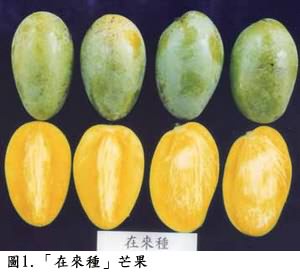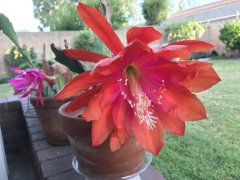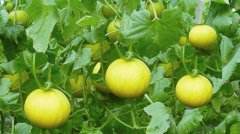The methods of field management after mango cultivation and harvest, and what matters should be paid attention to during mango pruning.
Do you know Taiwan mango soil mango? According to the calendar of cultivation in Taiwan, the harvest time of mango is about May to October. During this period, the farmers' hard work for a year finally paid off. However, one or two months after fruit harvest is an important and critical period for mango production in the future.
For a mango plant entering the fruiting age, in terms of fruit yield per plant, the fruit yield of Aiwen variety is more than 60 kg, while that of Jinhuang is about 50 kg. The fruit yield of other varieties is about the same amount, and a large number of fruits are consumed by mango trees, which does not include the waste caused by flower and fruit drop in flowering and young fruit stage. Therefore, the first problem encountered after mango picking is excessive nutrient consumption. if the tree nutrients are not replenished in time, it is easy to cause tree weakness and aging, resulting in diseases and insect pests, shortening of tree age, reduction of fruit yield and so on. so that the overall economic benefits of the orchard is not obvious and other sequelae. In order to produce a large amount of nutrients (especially carbohydrates) for the growth of fruit in the coming year, first of all, there must be enough shoots and leaves above ground for photosynthesis, and secondly, the underground part must have a sound root system. and supply sufficient mineral elements and water to facilitate absorption. In addition, with regard to the physiological and biochemical characteristics of mango, it is during the period of mango shoot growth and flower bud differentiation after fruit picking, there must be mature and strong branches before there can be good flower bud differentiation, and only next year will there be excellent fruit quantity and quality. so there are two stages of work at this time:
First, the first half of the work is to continue the results period management, mainly to promote the formation of new tips. Therefore, the most important work at this time is shoot management, soil fertility and water management. Due to the growth of fruit, most shoots and leaves aged due to excessive consumption of nutrients, and their photosynthetic efficiency was low. as the fruit branch of next year, the fruit production quality was poor, so it was necessary to carry out shoot general arrangement and re-cultivate new shoots. The number and quality of new shoots can determine the quality and quantity of next year's results. Pruning stimulates the formation of new shoots, which increases the number of fruiting branches and increases the amount of fruiting. In addition, due to the downward pressure of fruit weight, the germinated shoots during the fruiting period have caused disorderly of the tree potential, which can restore the tree shape by pruning to facilitate ventilation and light transmission, and facilitate other field management operations. Fertilizer cultivation and water management can promote shoot growth and improve fruit quality.
Second, the second half of the work is to cultivate and maintain mature and full fruit branches. During the period of mango flower bud differentiation in autumn and winter, because it takes time for new shoot growth, it takes about 3-6 weeks for a shoot to grow, with an average of 15 leaves on the shoot, while 25 leaves are needed for the growth of a high-quality mango fruit, and it takes 6 to 10 weeks for two shoots to be cultured, and there is still a standstill period between the shoots and shoots, so pruning should begin before the middle of September, preferably after fruit harvest. In this way, the cultivation of the shoot can be completed before late November, and there will be time for the branch to grow, otherwise the formation of the shoot is too late and not full and mature enough, and the time for flower bud differentiation is insufficient, which will affect the flowering and fruiting next year. Therefore, during this period of time, it is necessary to reduce water supply to promote shoot maturity and strengthen pest control in order to maintain shoot health.
The following should be noted when pruning:
1. The method of pruning the short fruiting branch is to prune the fruiting branch 1 or 2 times, and the position of the pruning is under the node of the shoot and shoot.
two。 When the fruiting branch of the previous year was longer, especially the fruiting branch formed by the growing branch, the green part of the branch was cut off and reserved to the second shoot of the brown part (about 30 cm), but it should not be excessively truncated, because the basal bud was too aging, and there was a high rate of shoot deformity after germination, which would affect the quality of heading and flowering next year.
3. The bending and drooping part is cut off so that the angle between the new shoot and the fruiting mother branch is not too small, thus forming a dead angle of management.
4. slender branches, diseased branches, overdense branches or oversturdy overgrown branches should be cut off at the same time.
5. Renewal pruning, that is, some of the old branches must be cut off to facilitate the re-cultivation of fruiting mother branches.
6. Before the flowering spikes are produced in the middle and late December, thinning should be carried out to remove the overdense or over-fine branches in the crown in order to maintain a good spatial distribution.
7. After a long period of pruning, the trees of Aiwen, Tainong 1 and other varieties have all been shaped, but they do not grow many branches, and most of them only do the act of cutting back. For fertile varieties, such as Jinhuang and Kate, there are more pruned branches except back pruning, and ring carving treatment can be carried out when the new shoots grow after harvest, so as to restrain the tree shape confusion caused by plant vegetative growth.

- Prev

What is the name of the peacock cactus plant? When does the peacock cactus bloom? when does the flowering time last?
"variant epiphyllum", also known as peacock cactus. In addition, it is also called "Ling Arrow Lotus" (English name: orchid cacti or epiphyllum flower) because it looks like a blooming lotus. In addition to peach powder, there are also yellow, white and common pink. that
- Next

Introduction of vertical cultivation techniques of muskmelon, fertilizer dosage and water management methods of muskmelon.
The management technology of vertical cultivation of cantaloupe is not difficult, but because the facilities used are expensive, which is much higher than the cost of tunnel cultivation, the average farmer can not bear it, so it becomes an obstacle to large-scale popularization. therefore, its cultivation techniques and melon field
Related
- The first cup of black tea in spring, the flavor and history of tea gardens in Kenya, Africa
- The computer can not only choose potatoes, but also grow tea rice. AI will grow winter oolong tea champion.
- It is not only the inflated tea bitten by insects, but also engraved with the four seasons tea in Beipu.
- The Oriental Beauty Tea Festival in Zhuxian County takes the stage at the weekend to experience the plus-size feast of oil tea.
- & quot; Oriental Beauty Tea & Exploration of Emei in Hsinchu, the hometown of quot;
- The new variety of strawberry "Tainong 1" dessert is the first choice with mellow aroma. Crimson gorgeous
- History of Tea in Taiwan: from Wild Inner Mountain to Export Tea Garden
- Two types of Taiwan Oriental Beauty Black Tea won the British three-Star Award for Childhood Tea Xiang Zhang Jiaqi changed from pilot to champion tea maker.
- Banana species and varieties: the planting history of Taiwan Xianren banana and dwarf banana is long, is banana disease resistant?
- Coffee planting Technology: Qianjie Coffee from Seedling to harvesting

